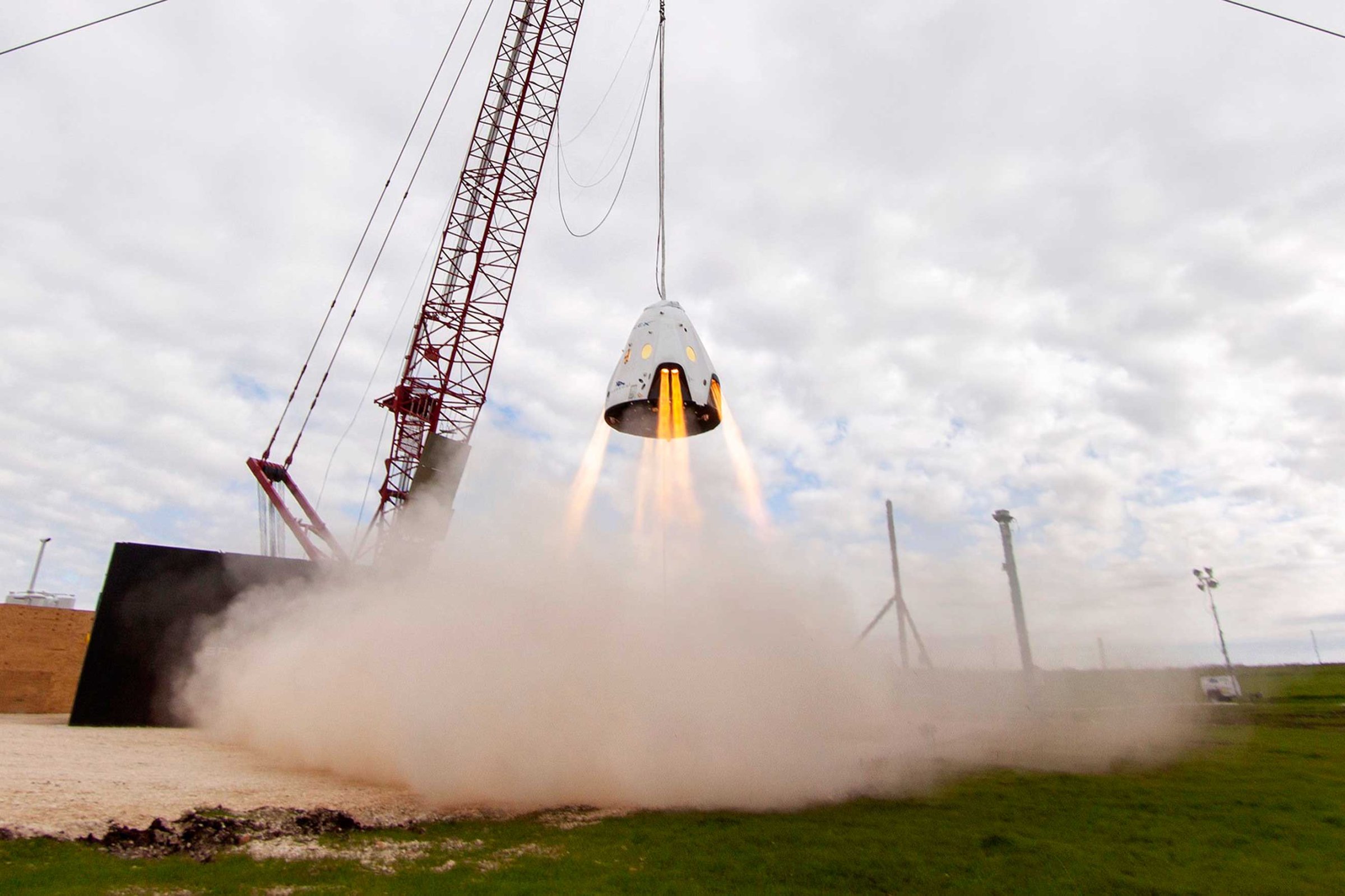
If you’re like most people, you probably don’t remember the last time the U.S. stopped flying people to space. But it was in July 1975 that the last Apollo flew, 1981 when the first shuttle took its place, and today America is on track to beat that flightless streak. No astronauts have taken off from Cape Canaveral or anywhere else on U.S. soil since the shuttles were retired in the summer of 2011.
In the coming years, however, the launchpads will roar again, with two new crew-rated ships–made not by NASA but by independent companies. Both are reminiscent of the old Apollo model–a conical spacecraft atop an upright rocket–but in nearly all other respects, the spacecraft represent a complete rethinking of how NASA does business.
All of America’s earlier spacecraft were made to order, with NASA drawing up the specs, choosing a manufacturer and then saying, effectively, “Build this.” The new ships embrace a new model altogether. Thanks to the push to privatize space travel, two companies–Boeing Aerospace and SpaceX–have designed and built the new spacecraft and are, in turn, selling their services to NASA.
Both Boeing’s Starliner and SpaceX’s Dragon supersize the Apollo, expanding its cockpit capacity from two crew members to up to seven, depending on how the seats are configured. What’s more, neither ship is a one-use throwaway like the Apollos; both are designed to be flown up to 10 times. NASA plans to use the spacecraft to carry crews to and from the International Space Station–a job that’s now done exclusively by Russia’s Soyuz spacecraft.
NASA intended for Starliner and Dragon to have their first flights in 2017, but that schedule has slipped and may push back a little further. The delays are mostly the result of the usual R&D challenges of designing a ship that is reliable enough to carry astronauts to space.
Dragon relies on another SpaceX vessel, the Falcon 9 rocket, to get into orbit–but the Falcons have presented the company with some serious technical difficulties so far. In June 2015, one of its rockets exploded shortly after liftoff, and in September 2016, another didn’t even get that far, blowing up on the launchpad during an engine test. The explosion appears to have been caused by a malfunction in a pressurized helium tank in the rocket’s second stage–something the company is hard at work trying to correct for future flights.
For now, Boeing’s booster, the Atlas V, is causing few headaches. It’s the Starliner itself that’s slowing things down, as the designers work to refine flight software and, more challenging, trim mass from the vehicle. After all, in space, every pound counts.
Still, for both companies–and for NASA–2017 is likely to be a threshold year. Boeing will put Starliners through various static tests at its labs in California and New Mexico. And SpaceX’s next big milestone will be the January return-to-flight launch of the Falcon 9, when the rocket is expected to carry a flock of nine communications satellites to orbit. Assuming Falcon does get its wings back, SpaceX aims for an uncrewed test flight of the Dragon sometime in the fourth quarter of 2017, followed by a crewed flight in the spring of 2018. Boeing’s corresponding flights will happen in June and August 2018.
What few people doubt is that these ships are going to fly and that astronauts aboard U.S. spacecraft will once again lift off from launchpads on American soil. The business model may have changed–and indeed it has considerably–but the urge to explore never will.
More Must-Reads from TIME
- Breaking Down the 2024 Election Calendar
- How Nayib Bukele’s ‘Iron Fist’ Has Transformed El Salvador
- What if Ultra-Processed Foods Aren’t as Bad as You Think?
- How Ukraine Beat Russia in the Battle of the Black Sea
- Long COVID Looks Different in Kids
- How Project 2025 Would Jeopardize Americans’ Health
- What a $129 Frying Pan Says About America’s Eating Habits
- The 32 Most Anticipated Books of Fall 2024
Write to Jeffrey Kluger at jeffrey.kluger@time.com